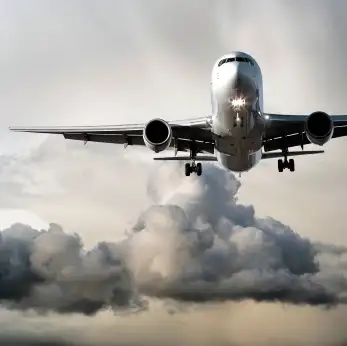
Michigan added its name to the list of six other states that have joined the Department of Justice’s lawsuit to halt the proposed merger between American and US Airways on antitrust grounds.
The DOJ complaint, amended to include Michigan among the plaintiffs, summarized the alleged effects of the merger thusly:
(a) Actual and potential competition between US Airways and American Airlines would be eliminated;
(b) Competition in general among network airlines would be lessened substantially;
(c) Ticket prices and ancillary fees would be higher than they otherwise would;
(d) Industry capacity would be lower than it otherwise would;
(e) Service would be lessened; and
(f) The availability of slots at Reagan National would be significantly impaired.
In a joint statement, the airlines responded as follows:
The decision of the Attorney General of Michigan to join the Department of Justice does not diminish the strength of our case, nor our determination to complete this transaction and deliver the benefits of the combination to the customers and communities we serve. Both American Airlines and US Airways want the opportunity to compete together to enhance competition with the largest airlines in the U.S.—United, Delta and Southwest—and a number of fast-growing low-cost carriers. We look forward to our day in court.
If no agreement between the DOJ and the airlines is reached in the interim, the trial is set to begin on November 25, and is expected to last for around 10 days. Other related events scheduled to take place in the run up to the trial’s start:
September 10 – Response to complaint due
September 30 – Exchange preliminary witness list
September 30 – Parties’ joint submission due
October 1 – Status hearing
October 25 – Close of fact discovery
October 25 – Plaintiffs’ expert disclosure
October 30 – Final deadline for requests for admissions to be served
November 8 – Defendants’ expert disclosures
November 15 – Supplemental and/or rebuttal expert reports
November 20 – Close of expert discovery
Merger Cheat Sheet
- The new company would retain the “American Airlines” name and be based at American’s Ft. Worth headquarters.
- US Airways chief Doug Parker will be the new CEO. American chief Tom Horton will be named chairman of the new board and remain in that position until the spring of 2014 when the company’s first annual shareholder meeting will be held. When Horton departs the board, Parker will assume his position as chairman.
- American’s creditors would own around 72 percent of the new company; US Airways shareholders would get the rest.
- Based on 2012 results, the new company would have generated $38.7 billion in revenue.
- The merger is expected to generate around $1 billion in combined extra revenue and cost savings for the new company.
- The new company will be valued at around $11 billion.
- Combining the third- and fifth-largest U.S. carriers will create the world’s largest airline, in terms of passenger traffic.
- Prior to any post-merger rationalization, the two airlines will have around 120,000 employees, 950 planes, 6,500 daily flights, and eight major hubs (American: Dallas, Miami, Chicago, Los Angeles, New York; US Airways: Phoenix, Philadelphia, Charlotte). Although the carriers promise to maintain all current hubs, Phoenix and Philadelphia are likely to be downsized in the post-merger “rationalization.”
- The new American will be a member of the oneworld alliance, not the Star Alliance.
- The merger is subject to review and approval by U.S. regulators. That wasn’t expected to be a problem since there is relatively little overlap between the two airlines’ networks.
- The actual merger won’t happen overnight. United and Delta required five and seven months respectively to secure the necessary approvals for their mergers.
- It was 22 months after their merger closed before United and Continental finally merged their frequent flyer programs. Expect a similar post-close interval before American and US Airways consolidate their programs.
- Comparisons between American and US Airways’ current mileage programs are probably moot since there’s a high likelihood that an entirely new revenue-based program (like Southwest’s) will be introduced to replace both programs.
- After the merger, 83 percent of U.S. domestic air traffic will be in the hands of just four airlines (American 26 percent, United 19.3 percent, Delta 19.2 percent, Southwest 17.3 percent).
This article originally appeared on FrequentFlier.com.
We hand-pick everything we recommend and select items through testing and reviews. Some products are sent to us free of charge with no incentive to offer a favorable review. We offer our unbiased opinions and do not accept compensation to review products. All items are in stock and prices are accurate at the time of publication. If you buy something through our links, we may earn a commission.
Related
Top Fares From
Today's Top Travel Deals
Brought to you by ShermansTravel
Kenya: 14-Night Tour, Incl. Tanzania &...
smarTours
 vacation
$7125+
vacation
$7125+
7-Night Bermuda Cruise From Round-Trip Cruise...
Norwegian Cruise Line
 cruise
$1036+
cruise
$1036+
Ohio: Daily Car Rentals from Cincinnati
85OFF.com
 Car Rental
$19+
Car Rental
$19+



